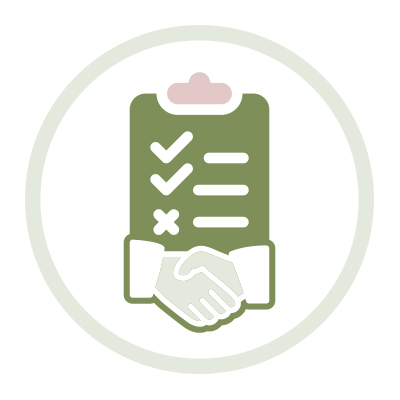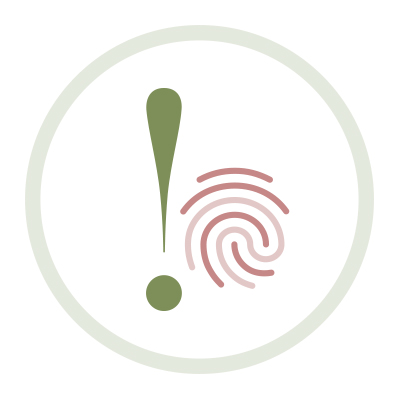
We’ve reached the end of our Miss Details Deep Dive series on Customer Acquisition Cost (CAC).
If you haven’t seen our previous installments, click the links below. They’ll take you through a crash course in the concepts and calculations that make up your CAC, and then delve into related topics that all play a role in your costs and margins, including industry, business size, branding, retention, and more. It’s a wealth of information which could help your business think about its CAC in a whole new light.
Quick Links for the Full Deep Dive Series on Customer Acquisition Cost
Part 1: Introduction | Part 2: Exploring Customer Acquisition | Part 3: How Industry Affects Your Costs | Part 4: Why Branding Makes a Difference | Part 5: Customer Retention + Lowering Your Cost | 
If You Learned One Thing...
There’s a reason we’ve spent so much time and energy focusing on CAC. It’s critical for business owners and marketing managers to have a complete grasp of the concept and to be able to apply it to their own company.
Understanding CAC means understanding your numbers. It’s one of the top Key Performance Indicators (KPIs) that businesses can use to measure progress, but you have to set yourself up for success: you can change what you measure, but what you don’t measure can fester into real problems which hold you back. And as we’ve explained over the course of this series, determining your businesses’ CAC isn’t something you can throw together in five minutes.
Without knowing how much it takes to acquire customers, you’ll never be able to understand another important number: your Customer Lifetime Value (LTV). There’s an ideal ratio of LTV:CAC of 3:1 which can indicate if your business is spending too much on marketing, or not enough; if your costs need to come down, or if you’re missing out on profits.
If you’re getting overwhelmed by all the numbers, here is a super-helpful free spreadsheet to help you calculate your customer acquisition cost to begin to get yourself sorted out. (Thanks to the DemandJump article.)
Here’s how you should move forward to ensure your business is in the right place:

Evaluate Your Business
It’s one thing to know your product and/or service, and to be an expert in your area. But it’s not nearly as easy to get the full picture of your business from an economic standpoint: where your customers come from, what pulls them into your funnel, what inspires them to spend their money with you, and what gets them coming back. To accomplish this, you’ll need to take a step back and analyze your business and its processes objectively .
Study your financial spreadsheets and know your numbers to the point where you can recite them from memory. Don’t just assume that what you’ve been doing is what must be done, or that it’s still best practice for your company and brand as it evolves.
Communicate with your employees, your vendors, your clients and customers, and those who interact with your business and brand in any way. Get their input, listen to their feedback, and be open to implementing their ideas, even if they seem unconventional.

Know Your Customers
Being able to attract and then retain customers means making sure you’re contacting the right people who are the best fit for your business. Of course, figuring out who are ‘the right people’ is a process of its own. Simple demographics are a good place to start, but they only paint a limited piece of the picture. Don’t just know the age and location of your customers; try to figure out their spending habits, their family size, their income level, and what motivates them to buy. The more data you can get, the better.
Even more important than knowing who your customers are is understanding why they’ve come to your business. Whether consciously or subconsciously, we all make decisions that lead us to certain brands and businesses, and we continue to use those businesses if they match the values and expectations we had of them. You need to recognize and appreciate what it is about your brand that brings customers to you, and what it is in your messaging that encourages them to return.

Remember Your Branding
Last but not least, keep in mind all the assets that affect your costs. All the visual design elements that go into your logo, your storefront, your website, your business cards— they all factor into how people view your business and affect the way they feel about spending money with you. When conceptualizing your branding ideas and putting them into play, remember: authenticity, differentiation, quality, and consistency. Determine your business’ ethics and values and launch a marketing campaign that is true to your vision and values, differs from the competition, and showcases a quality product in a way that allows people to always tie your branding efforts back to your business, even when you’re innovating.
Coming Up Next…
Watch for our second Deep Dive Series series: Building Your Brand. We’ll give you the inside scoop on how to conceptualize, refine, and execute a flawless branding plan, whether you run a solopreneur operation or a seven-figure corporation.
Keep an eye out for that series, as well as several other information-packed articles we’ll be posting in between. Of course, the best way to do that is by signing up for our emails, which come twice a month and are filled with news and tips from the Miss Details branding experts to help your business attain the consistent, quality, relatable branding you want.
Don’t want to miss out on our articles and insights?
Sign up for the Miss Details newsletter today.
More From This Deep Dive Series on Customer Acquisition Cost
About Miss Details
Founded by Tanya Gagnon in 2004, Miss Details is a full-service branding and design firm which helps entrepreneurs and companies launch, adjust and reinvent key aspects of their branding and business marketing strategy. With a background in all aspects of interior and experiential design and a passion for data-backed design, Tanya leads the Miss Details team to guide her clients through everything from a refreshed website to a full rebranding, helping them put the pieces together to create a consistent, authentic, unique brand image.



